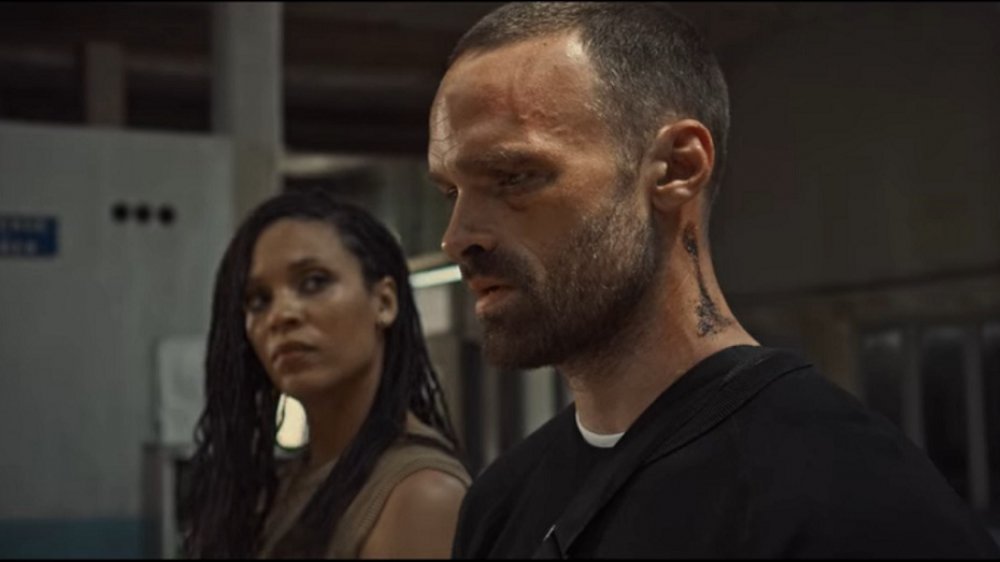The Ending Of Lost Bullet Explained
Contains spoilers for Lost Bullet
One of the best services Netflix provides is a major platform on which obscure foreign films get to reach a broader audience. The latest international action thriller on the streamer has just about everything you've come to expect from the genre, including an explosive ending that can be hard to follow at times.
Lost Bullet is a 2020 shoot-'em-up from French filmmaker Guillaume Pierret. This is Pierret's directorial debut in film, though he has previously rendered services on three French television series dating back to 2012. The film's plot follows a pretty linear path through the first two acts, but the extended series of action sequences that comprise act three can be a little challenging to track.
Guillaume's story (he also wrote the screenplay) follows small-time criminal Lino (Alban Lenoir) as he perpetrates a jewelry store heist that ultimately gets him locked up. A police officer named Charas (Ramzy Bedia) recognizes Lino's mechanical skill and offers him a job fixing up squad cars for the department. Eager for the brownie points with the law, Lino agrees, and goes to work modifying cop cars so they have the juice to chase down all those speedy French perps.
With Lino finally on the right side of the law, everything seems to be copacetic — until Charas discovers a suspicious auto part in a car implicated in another case that he's investigating. The part — an "injection diverter" — closely resembles a modification Charas found in Lino's car the day he got picked up for knocking over that jewelry store. Lino and Charas work out that Lino's brother Quentin (Rod Paradot) must still be working with organized crime. The two set out to interrogate him, and that's when things get wild.
Lino has to clear his name in Lost Bullet
As Lino, Charas and Quentin are about to leave the scene, a dirty cop named Areski (Nicolas Duvauchelle) shoots Charas dead at point-blank range. Areski realized that Charas was about to discover his involvement with Quentin's criminal gang, and he decided that killing him and destroying the evidence was the best way to stay one step ahead of the law. Lino and Quentin manage to get away, but they realize the dead cop doesn't look too good considering their extensive rap sheets; Areski could easily pin the murder on them. As it turns out, their instincts are good, since that's exactly what he tries to do. Lino and Quentin are now two of the most wanted men in the country.
Lino realizes that the only physical evidence that can prove his innocence is the bullet Areski fired through Charas that is still likely lodged in his car. He needs to find the lost bullet — get it? With Areski hot on his tail, Lino recovers the car and uses his mechanical skills to turn it into a jury-rigged tank so he can navigate it safely to forensics.
Areski does eventually catch up with Lino, and plants a grenade inside the trunk of the jewel thief's makeshift tank. The explosive blows Lino's critical evidence to smithereens, but Lino is undeterred. He takes the surviving front half of the car to forensics, where experts are able to extract Areski's bullet from the dashboard. Using ballistic analysis they confirm that Areski indeed shot Charas.
This satisfying conclusion emphasizes the film's theme that good and bad men exist on both sides of the law.

